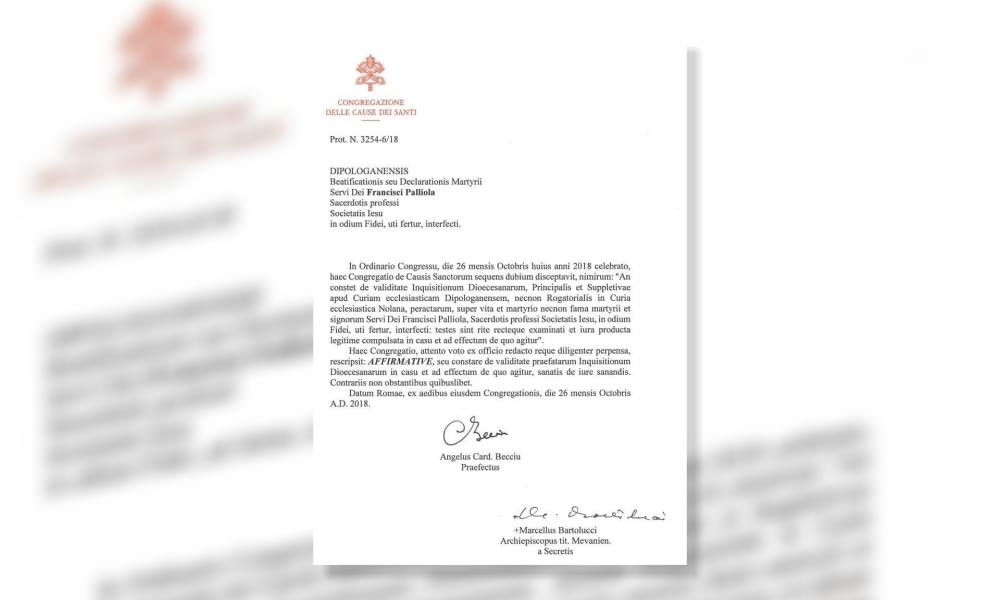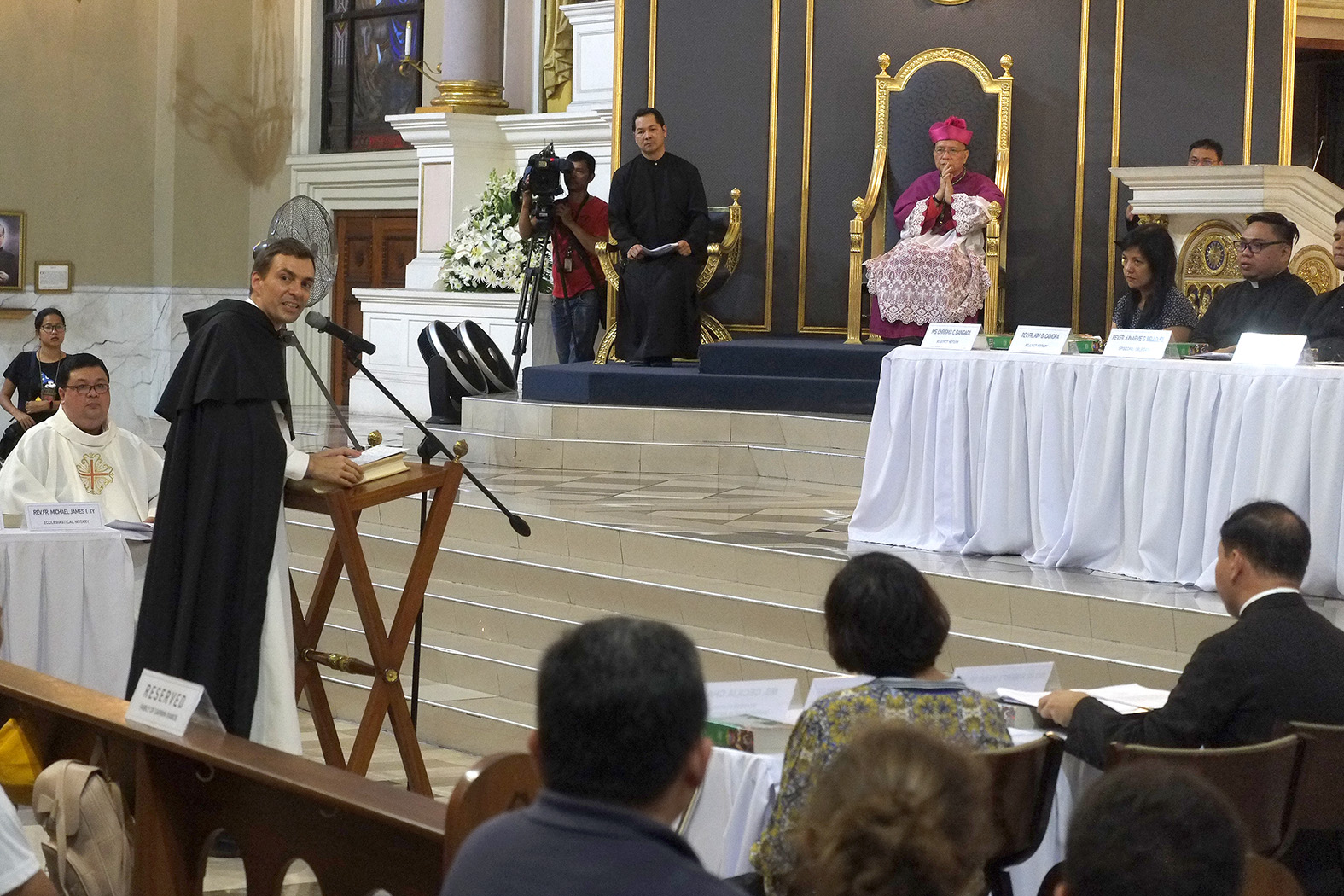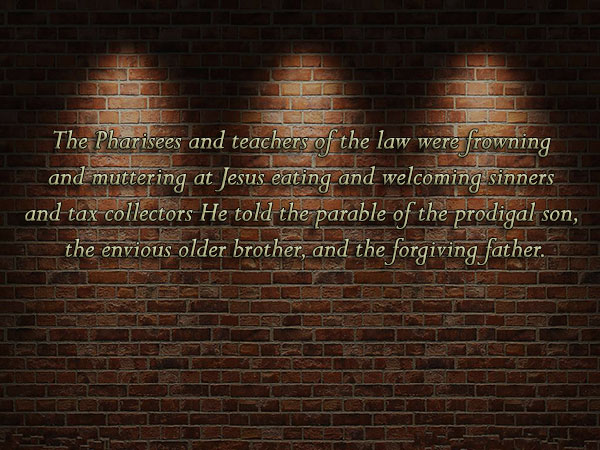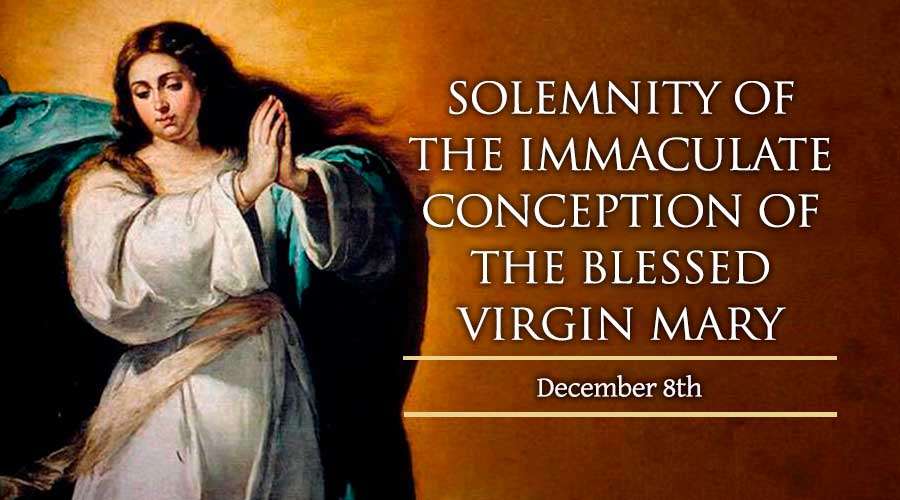
A copy of the Declaration of Validity of the Diocesan Process for the Cause of Martyrdom of the Servant of God Francesco Palliola, SJ from the Congregation for the Causes of Saints dated October 26, 2018.
By Roy Lagarde
Manila, Philippines
The inquiry into the sainthood cause for a 16th century Jesuit “martyr” has moved forward with the Vatican’s Congregation for the Causes of Saints issuing a declaration that the investigation is valid.
The declaration dated Oct. 26 came less than a year after the Diocese of Dipolog submitted the result of its inquiry into Fr. Francesco Palliola’s life to the Vatican in November 2017.
“This is good news for, in brief, the declaration of validity gives permission for the postulator of the said cause to start with the composition of the ‘positio,’” said diocese’s spokesman Fr. Patrick Dalangin.
The positio is a biography and official position documenting the Palliola’s life and works in order to prove his martyrdom.
The cause convenes theological, historical and professional consultants.
If majority of the theologians are in favor, the cause for martyrdom is passed on for examination to the cardinals and bishops members of the Congregation.
An affirmative vote is needed from the cardinals and bishops before they present the cause to the pope, who approves and authorizes the Congregation to draft a decree declaring the candidate a martyr.
For a martyr, no miracle is required. Thus when the pope approves the position declaring that the person was been martyred for the faith, the title “Blessed” is granted.
The cause of martyrdom of Palliola was opened in January 2016 and was formally closed in September 2017 by Bishop Severo Caermare at the Holy Rosary Cathedral in Dipolog City.
Palliola was born in May 1612, entered the Society in 1637, and arrived in Manila in 1643, then in Dapitan the following year.
He mastered Visayan and preached in it. But seeing how the Lumad community of the Subanen could hardly understand Visayan, he studied and learned the Subanen language. The missionary is credited as being the first European and Jesuit to do so.
While stationed at Dapitan, he went on missionary journeys to establish the settlements of Ilaya, Dipolog, Dicayo and Dohinob, Ponot and Quipit.
When Josef Zanzini (aka José Sanchez) was assigned as his assistant, he left Zanzini in charge of the Visayan communities while he devoted himself to the Lumads.
He also established visitas as far south as the boundaries between present-day Zamboanga del Norte and Zamboanga del Sur.
While visiting Ponot to reconcile a Subanon named Tampilo, who had turned away from the Christian faith, he was killed by Tampilo and his co-conspirators in the early morning of January 29, 1648.
“While dying, he forgave his enemies, commended himself to Jesus and Mary. He died clutching the rosary and a crucifix he brought from Europe,” said Dalangin.
Since his death 370 years ago, his memory lingers in Zamboanga del Norte. In fact, a street in the town of Manukan is named after him.
He also figures in the oral stories of the Subanen, remembered as “a loving and protective father”.
“The site of Fr. Palliola’s martyrdom has been a place of pilgrimage over the years,” Dalangin added.
Bishop Caermare implores everyone to pray for a prompt declaration of martyrdom of Fr. Palliola and his beatification, hoping that the country will have its third saint, and the first from Mindanao.









